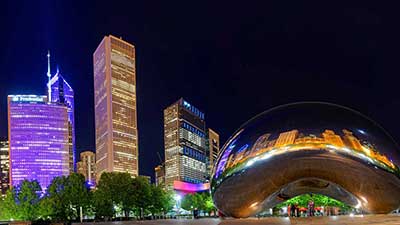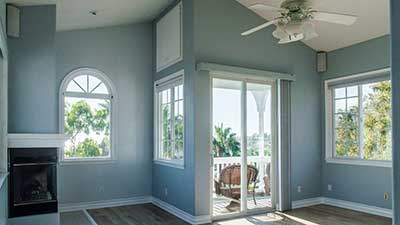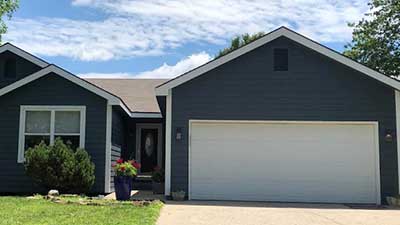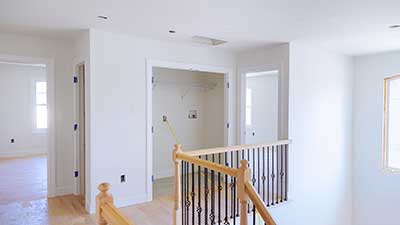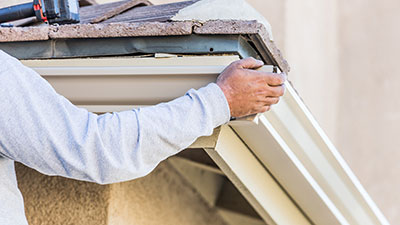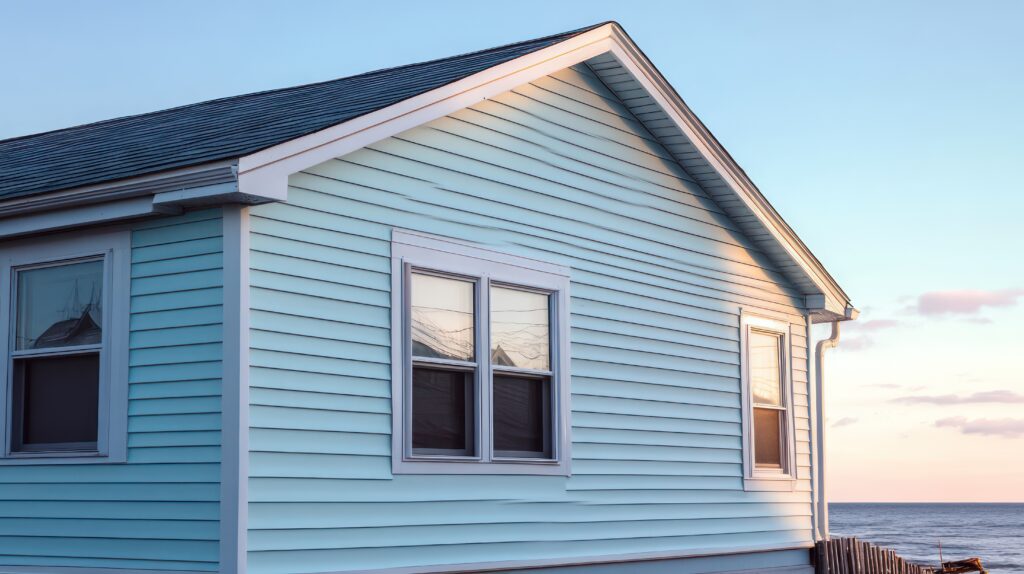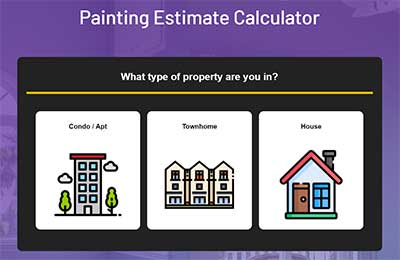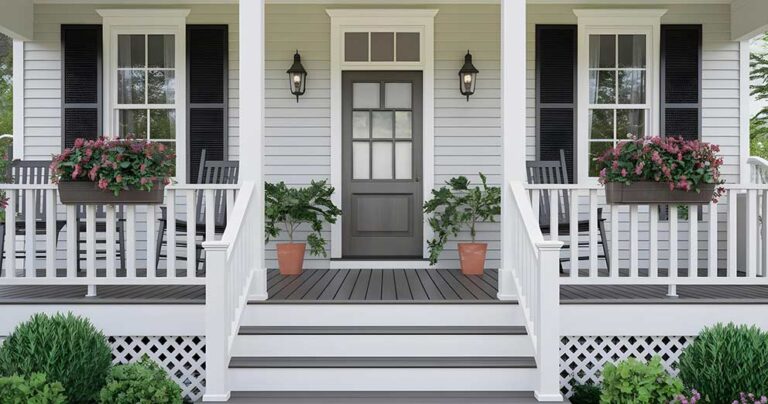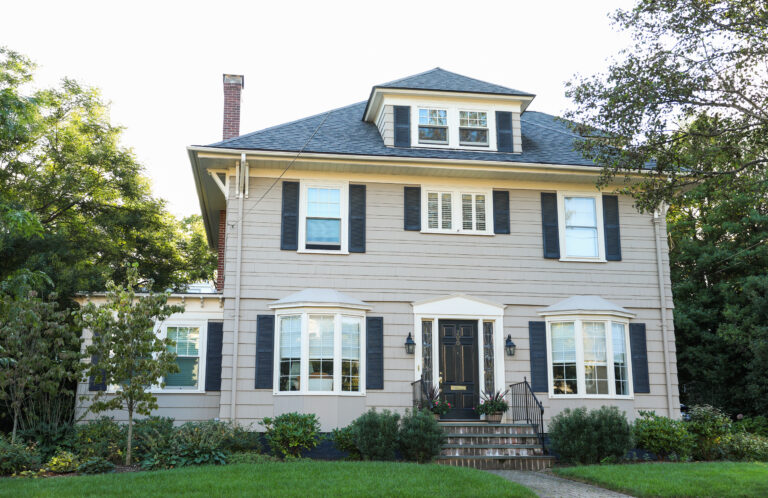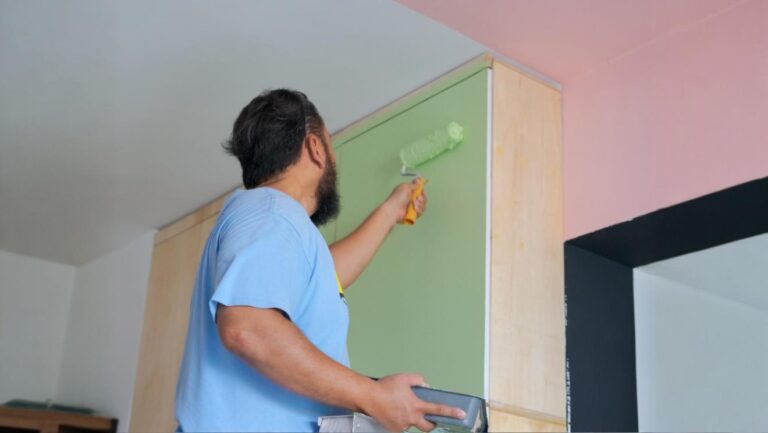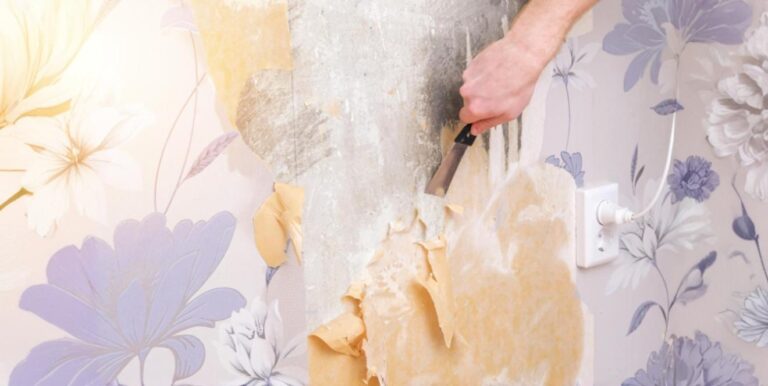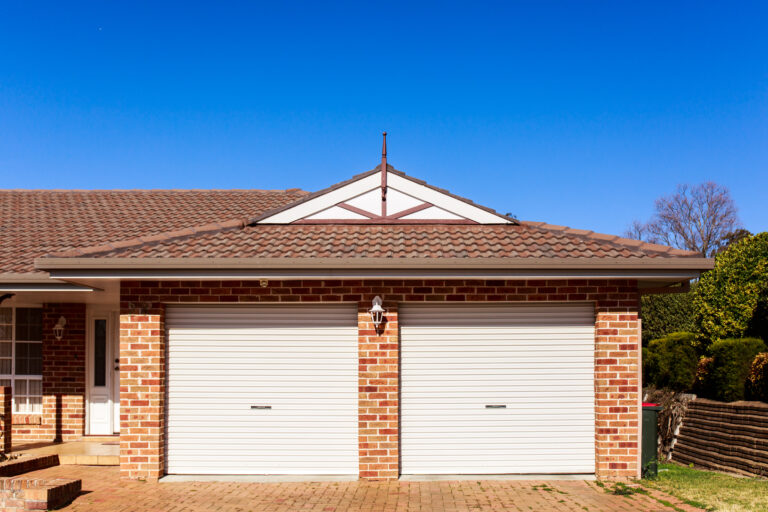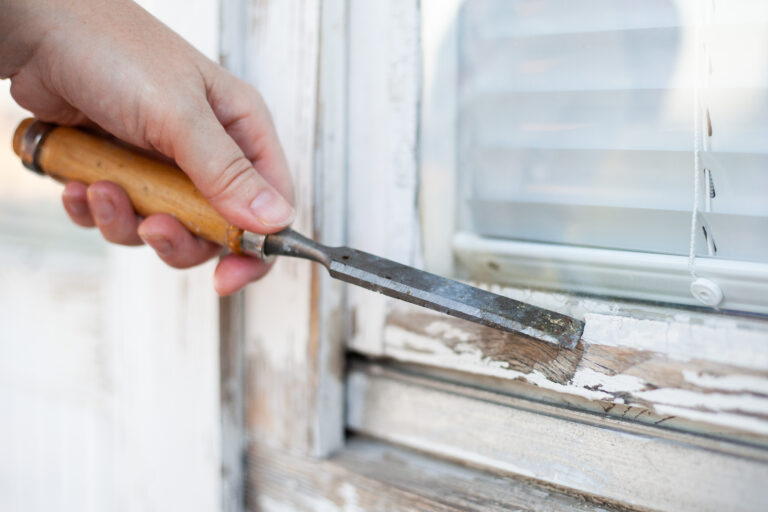Believe it or not, painting your vinyl siding is one of the smartest and most cost-effective ways to keep your home looking fresh and protected. Vinyl siding is a popular choice because it’s durable and low-maintenance, but even the best siding can start to look tired after years of exposure to the elements. Instead of going through the hassle and expense of replacing it, a fresh coat of paint can bring your siding back to life. But before you jump in, let’s break down what it really costs to paint vinyl siding and why it might be the best option for you.
Key Takeaways
- Painting vinyl siding is a cost-effective way to refresh and protect your home’s exterior.
- Using vinyl-safe paint is crucial to prevent peeling and ensure a long-lasting finish on your vinyl siding.
- Professional painters charge between $1.50 and $3.50 per square foot for exterior paint jobs on vinyl siding.
- You can paint vinyl siding yourself, but experts often deliver a smoother, more durable finish on your exterior.
- Painting vinyl siding boosts curb appeal and can significantly increase your home’s value with a new paint job.
- Compared to replacing, painting vinyl siding saves thousands of dollars while extending the life of your existing siding.
Get an accurate quote in less than 10 minutes!
Breaking Down the Cost to Paint Vinyl Siding
When you’re thinking about painting vinyl siding, the first thing that probably comes to mind is the cost. It’s a fair question—how much will it really set you back? The answer depends on a few key factors, including the materials you choose, whether you hire a pro or do it yourself, and the size of the job.
Understanding Material Costs
Let’s start with the basics: the materials. You’ll need paint, primer, and possibly some tools if you don’t already have them. But not just any paint will do. You’ll need vinyl-safe paint, which is specially formulated to adhere to vinyl siding and expand and contract with it as the temperature changes. This type of paint is typically a bit more expensive than standard exterior paint, but it’s worth the investment to ensure a long-lasting finish.
Paint and Primer: You can expect to spend anywhere from $40 to $140 per gallon of vinyl-safe paint, depending on the brand and quality. If your siding is darker or has never been painted before, you might also need a primer, which can add another $30 to $100 per gallon to your costs.
Vinyl-Safe Paint: Why is vinyl-safe paint so important? Regular paint might look great when it first goes on, but it can crack, peel, or bubble over time because it doesn’t have the flexibility to move with the vinyl. Vinyl-safe paint is designed to avoid these problems, giving you a finish that looks good for years.
Labor Costs: Hiring a Pro vs. DIY
Now, let’s talk about labor costs. The biggest question here is whether you’ll tackle the job yourself or hire a professional painter. If you’re handy and have the time, painting your vinyl siding can save you money. But if you’re not confident in your painting skills or simply don’t have the time, hiring a pro might be the way to go.
| DIY Painting | Professional Painting | |
| Cost | Lower cost since you’re saving on labor but must invest in quality tools (paint, brushes, ladders). | Higher cost due to labor (around $4,500–$6,000 for a 2000 sq. ft. house). |
| Time & Effort | Requires significant time and physical effort for prep work and painting. | Saves time and effort; professionals complete the job faster. |
| Control | Full control over the project, including material choices and execution. | Less control, but professionals handle the entire process with expertise. |
| Quality of Work | May not match professional quality; mistakes could affect finish durability and appearance. | Higher quality with expertise ensuring smooth, even finishes and longer-lasting results. |
| Preparation Work | Requires you to handle all prep work (e.g., power washing, priming, caulking). | Professionals handle all preparation work efficiently. |
| Satisfaction | Can be rewarding if you’re well-prepared and equipped. | Provides peace of mind with guaranteed quality and less need for future touch-ups. |
Square Footage and Size of the Job
The size of your home—or more specifically, the amount of siding that needs to be painted—directly impacts the cost. More square footage means more paint, more time, and more money.
Calculating Costs by Square Foot: As a rough estimate, you can expect to pay about $1 to $3 per square foot to paint vinyl siding yourself, including paint and supplies. If you’re hiring a pro, that number jumps to $1.50 to $3.50 per square foot, but can vary based on height, slope of ground. Calculating it for one’s self is another thing entirely – what is someone’s time worth per hour?
The best way I could break it down is if a pro can do 400SF at $280 all in(Using that number as 1 full gallon covers that). A professional will do this in 2 hours. A typical homeowner will do it in four.
If we take the paint cost of around 60 for a gallon, the homeowner is saving (280-60)/4 or potentially $55 an hour. However, this does not include whatever sundries, ladders, etc the client may need to purchase. They also have to calculate risk of injury as well. When we go across an entire job we can’t look at this number in a vacuum either – when getting close to parts NOT to be painted, it is common to make mistakes which will add sometimes as much as 50% more time to the job for cleanup and correction. It is then fair to say I think a home owner is essentially paying themselves roughly $28 an hours doing it themselves. They also need to consider that a 2000 sf house will take them approximately 102 hours for two coats. if they have a full time job, this means at 6 hours a day for saturday and sunday this wpouild take them about 9 weekends or 2.25 months to complete. Then there is a level of burnout in all areas of life difficult to calculate.
Factors That Can Affect the Cost to Paint Vinyl Siding
Now that we’ve covered the basics, let’s talk about the factors that can drive up—or down—the cost of your project. These are the things you might not think about right away, but they can make a big difference in the final bill.
Condition of the Siding
Is your vinyl siding in good shape, or does it need some TLC before you start painting? The current condition of your exterior siding can significantly impact the cost.
Cleaning and Repairs: If your siding is dirty, you’ll need to clean it thoroughly before painting. This might involve renting a pressure washer or hiring a professional to do the job, which can add $100 to $300 to your costs. If there are cracks, holes, or other damage, you’ll need to repair those areas before painting, which can also add to the cost of the paint job.
Additional Costs to Consider
Finally, don’t forget about the little things that can add up.
Surface Preparation: If your siding is old or hasn’t been painted before, you might need to do more prep work. This could include sanding, priming, or even stripping old paint, which can add both time and cost to your project.
Tools and Equipment: Do you have the right tools for the job? If not, you might need to rent or buy equipment like ladders, sprayers, or brushes. While these costs are generally lower than the paint and labor, they can still add up, especially if you’re tackling the project yourself.
Why It’s Worth Painting Your Vinyl Siding
Now that we’ve gone over the costs and factors that can affect them, let’s talk about why painting your vinyl siding is a worthwhile investment. It’s more than just a cosmetic upgrade—it’s a way to protect your home and even save money in the long run.
Longevity and Durability
One of the biggest reasons to paint your vinyl siding is to extend its life. Over time, even the toughest siding can start to fade, crack, or show signs of wear. A good quality paint job doesn’t just cover up these imperfections; it adds an extra layer of protection against the elements.
When you use the right kind of vinyl-safe paint, it can help your siding resist UV damage, moisture, and temperature fluctuations. This means your siding will look better and last longer, which can save you money on repairs or replacement down the road. Plus, a well-maintained exterior adds to the overall value of your home.
Boosting Curb Appeal
We all know that first impressions matter, and your home’s exterior is the first thing people see. Whether you’re thinking about selling or just want to enjoy a refreshed look, painting your vinyl siding can give your home a major curb appeal boost.
A fresh coat of paint can make your home stand out in the neighborhood and even make it look newer. And if you choose a modern color that complements your home’s style, you might even find that it increases your property’s value. It’s a simple but effective way to enhance your home’s appearance without breaking the bank.
Best Exterior Paint Colors for Vinyl Siding
Choosing the right paint color for your vinyl siding can significantly enhance your home’s curb appeal. Lighter colors like whites, beiges, and soft grays are popular for reflecting heat and maintaining siding integrity, giving your home a larger, more inviting look. Darker shades such as navy or dark green add sophistication, but it’s important to use vinyl-safe paint to prevent warping from heat absorption. Neutral tones like taupe, gray, and soft greens offer a timeless, versatile look that complements various architectural styles. Bold colors like red or black can be used as accents on shutters or doors to add a modern touch while keeping the main color subtle. Trusted brands like Sherwin Williams provide vinyl-safe paint options that ensure a long-lasting, vibrant finish.
Cost Comparison: Painting vs. Replacing
Now, let’s compare the costs of painting your vinyl siding versus replacing it entirely. This is where painting really starts to shine as a cost-effective option.
Cost of Replacing Siding: Replacing vinyl siding can cost anywhere from $5 to $10 per square foot, which adds up quickly. For a 2,000-square foot home, you could be looking at $10,000 to $20,000, not including any additional costs for removing the old siding, disposal fees, or repairs to the underlying structure.
Cost of Painting Siding: In contrast, painting your vinyl siding costs significantly less. Even at the higher end of the scale, you’re looking at around $3,000 to $7,000 for a professional job, and even less if you do it yourself. That’s a big difference, especially if your siding is still in good shape and just needs a little refresh.
The Bottom Line: Painting your siding is a smart way to extend its life, improve your home’s appearance, and save money compared to replacement. It’s a win-win for your wallet and your home.
Common Mistakes to Avoid
Even the best DIYer can make mistakes, so here are a few common pitfalls to watch out for.
Skipping the Primer
If you’re painting over dark or stained siding, skipping the primer can lead to uneven color and poor adhesion. Always use a primer if you’re not sure whether it’s needed—better safe than sorry.
Using the Wrong Paint
As we’ve stressed throughout this article, using the wrong type of paint on vinyl siding is a recipe for disaster. Make sure you’re using a high-quality, vinyl-safe paint that’s designed to expand and contract with your siding.
Ignoring Weather Conditions
Painting in the wrong weather conditions can ruin your hard work. Extreme heat, cold, or humidity can affect how the paint adheres and dries, leading to a finish that doesn’t last. Be patient and wait for the right weather—it’ll pay off in the long run.
Maintenance Tips After Painting Vinyl Siding
After you paint vinyl siding, keeping it in top condition is essential to maximize the lifespan of your new exterior. Regular maintenance helps protect the paint from environmental damage and keeps your home looking fresh for years to come.
Start by performing routine inspections to catch any early signs of wear or damage. Look out for cracks, peeling, or fading, especially after harsh weather conditions. Cleaning your vinyl siding annually with a mild detergent and a soft brush or a low-pressure washer can remove dirt, mildew, and debris that accumulate over time. This simple step helps maintain the vibrancy of your paint and prevents buildup that could cause long-term issues.
It’s also important to avoid harsh chemicals or abrasive cleaners, as they can damage the paint and the vinyl underneath. If you notice any minor damage, touch it up promptly to prevent it from spreading. Maintaining a protective barrier on your siding by keeping nearby shrubs and trees trimmed will also help avoid scratches or dents that can compromise the paint’s integrity.
By following these maintenance tips, you can ensure that your investment in painting vinyl siding pays off, keeping your home’s exterior looking its best and prolonging the lifespan of your vinyl siding.
Conclusion: Painting Vinyl Siding – A Smart Investment
In the end, painting vinyl siding is more than just a quick fix—it’s a smart investment that can enhance your home’s curb appeal, protect your siding, and save you money. By understanding the costs involved, preparing your siding properly, and using the right materials, you can achieve a beautiful, long-lasting finish that makes your home stand out.
So, whether you’re planning to do it yourself or hire a professional, remember that a little time and effort upfront can go a long way in ensuring a successful project. Your home deserves the best, and with the right approach, painting your vinyl siding can be one of the best home improvement decisions you make.
FAQs
What is the average cost to paint vinyl siding for an exterior paint project?
The cost to paint vinyl siding typically ranges from $1,500 to $7,000, depending on factors like home size, paint quality, and whether you hire a professional.
How can I ensure a quality paint job when I paint vinyl siding?
To ensure a quality exterior paint job, use vinyl-safe paint, apply a primer if needed, and work in ideal weather conditions. Proper surface preparation is key.
Is it necessary to prime vinyl siding before applying new paint?
Priming vinyl siding is recommended if the existing surface is dark, stained, or unpainted, as it helps the new paint adhere better and ensures an even finish.
How long does a siding warranty typically last after professionals paint vinyl siding?
Siding warranties after painting can vary, but most paint jobs come with a warranty lasting 5 to 10 years, depending on the paint used and conditions during application.
Can acrylic paint be used on vinyl siding to achieve a mildew-resistant finish?
Yes, acrylic paint is suitable for vinyl siding and can provide a durable, mildew-resistant finish. Be sure to choose paint specifically formulated for vinyl surfaces.
Is painting vinyl siding more cost-effective than vinyl siding replacement for exterior surfaces?
Painting vinyl siding is usually more cost-effective than replacement, offering a significant savings compared to the cost of installing new vinyl or wood siding.
What factors influence the paint vinyl siding cost for a painted vinyl siding project?
Factors like home size, condition of the siding, quality of paint, and whether you hire a professional significantly influence the paint vinyl siding cost.
What are the best weather conditions for painting vinyl siding?
The best weather conditions for painting vinyl siding are mild temperatures between 50°F and 85°F with low humidity. Avoid painting in direct sunlight or when rain is expected, as these conditions can affect how the paint adheres and dries, leading to a less durable finish.

